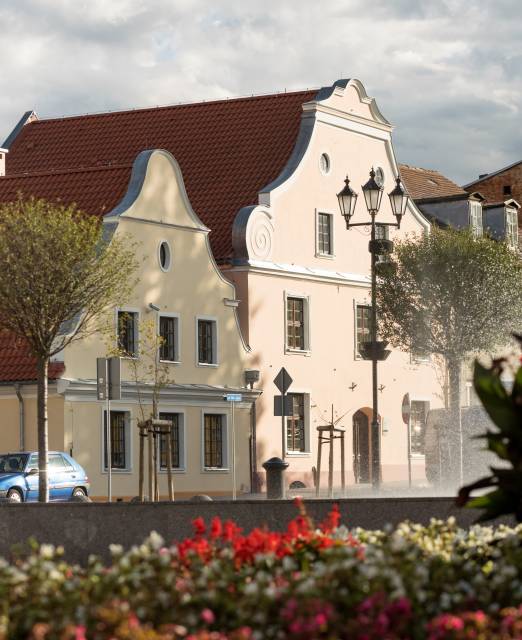According to the latest hypothesis, the original town of Włocławek was located on the right bank of the Vistula River and consisted of a settlement complex with a castle in Zarzeczewo, origins of which date back to the first half of the 11th century. The castle was moved to the left bank of the Vistula River at the turn of the 11th and 12th centuries. It was built on an artificial island surrounded by a moat. It was probably at this time that an early urban-type settlement developed on the subsoil, on site of the present Gdańska, Tumska, Łęgska, Towarowa and Bulwary streets.
The settlement of Zawiśle also dates back to the early Middle Ages. Archaeological excavations revealed a cemetery from the 11th-13th centuries. In the 12th century, the church of St Gotthard was built, which also served as a hospice for the sick. The name of the settlement, Szpetal, was derived from the name of the hospital.
A Cistercian abbey was founded between 1232 and 1236. It was destroyed only 10 years later due to Prussian invasions.
The role of Włocławek increased significantly in the first half of the 12th century, when it became the capital of the Kuyavia - Pomerania diocese. At that time there were two early urban centers next to the castle: the ducal residence and the cathedral.
As a result, important administrative and state functions (seat of the castellany) and ecclesiastical functions (center of the diocese) were concentrated in one place.
During the reign of Bishop Michał Godziemba, a stone cathedral was built on the site where Gdańska, Bednarska and Zamcza streets are located today.
In the middle of the 13th century, Włocławek began its transition from princely to episcopal rule. Finally, in 1266, Duke Kazimierz Konradovic signed a treaty with Bishop Wolimir, confirmed by a privilege, which gave the local bishops full ownership of Włocławek. Between 1266 and 1275 the seat of the Castellany was moved to Brześć Kujawski.
The development of the town was abruptly interrupted by the Polish-German war. In 1329 the Teutonic Knights occupied the Dobrzyń Land and then set out on an expedition to Kuyavia. The war resulted in the total destruction of Włocławek. On Easter Sunday, 23 April, a Teutonic detachment led by Christian von Koln burned the town to the ground, destroyed the cathedral and murdered or kidnapped the inhabitants.
The military clash in Płowce on the 27th of September 1331 did not put an end to the aggressive actions of the Teutonic Knights. In 1332, the troops of the Teutonic Order conquered the Kuyavia region, including all the major strongholds. The exception was Włocławek, which remained in the possession of the bishop Maciej Pałuka of Gołańcz, with the consent of the Teutonic Order. The Kuyavia region was under Teutonic occupation until the Treaty of Kalisz in 1343.
After concluding an agreement with the Teutonic Knights, the Bishop began to rebuild the town, making significant changes to its layout. The basis for this was a document issued by Bishop Maciej Pałuka on the 8th of September 1339.
This document - the famous Chełmno Rights - defined the political framework of the new community and the relationship between the citizens and the lord of the town.
In 1330, the church of St. Vitalis was built. Today, it is the oldest brick historic building in the city. In the years 1340-1411, on a hill located near the Zgłowiaczka River, a gothic cathedral was erected, which exists up till now.
During the Great War with the Teutonic Order between 1409 and 1411, one of the central royal intelligence services operated in Włocławek, collecting information from the Teutonic Order land and the knights of Kuyavia actively participated in the Battle of Grunwald, fought on July 15th, 1410.
The last Teutonic attack on the town took place at the beginning of September 1431. The monastic troops burned them to the ground, not sparing the inhabitants and sacral buildings. The conclusion of the Second Peace of Toruń on 19th October 1466, which crowned the Thirteen Years' War, removed the odium of the Teutonic neighborhood from Włocławek.



 Places
Places Guides
Guides Map
Map Outdoor games
Outdoor games Trails
Trails Events
Events Mobile app
Mobile app Contact
Contact


